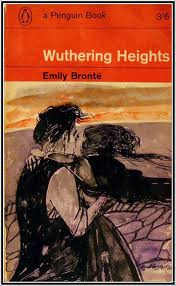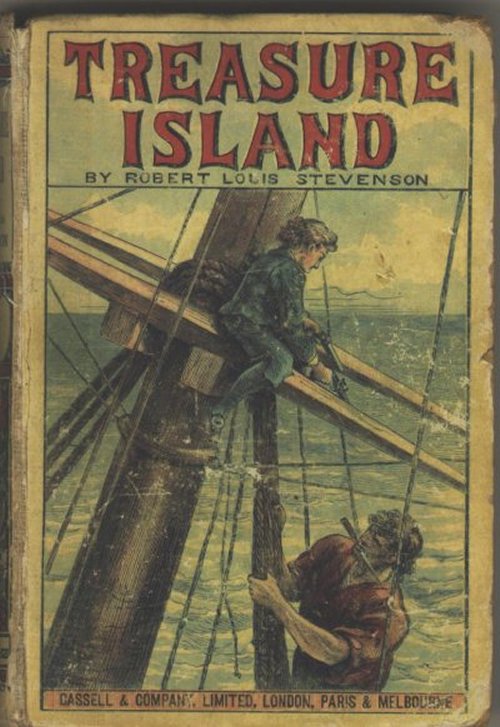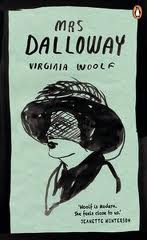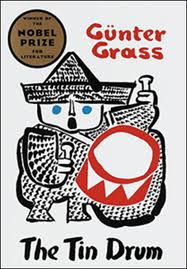Author Photo And Bio
 1. Wuthering Heights by Emily Brontë (1847). The author’s only novel, published a year before her death, centers on the doomed love between Heathcliff, a tormented orphan, and Catherine Earnshaw, his benefactor’s vain and willful daughter. Passion brings them together, but class differences, and the bitterness it inspires, keeps them apart and continues to take its toll on the next generation. Wuthering Heights tells you why they say that love hurts.
1. Wuthering Heights by Emily Brontë (1847). The author’s only novel, published a year before her death, centers on the doomed love between Heathcliff, a tormented orphan, and Catherine Earnshaw, his benefactor’s vain and willful daughter. Passion brings them together, but class differences, and the bitterness it inspires, keeps them apart and continues to take its toll on the next generation. Wuthering Heights tells you why they say that love hurts.
 2. Treasure Island by Robert Louis Stevenson (1881–82). Young John Hawkins was told to beware a man with one leg. But after discovering a treasure map, he acquires a ship and hires —you guessed it —one-legged Long John Silver to cook for his ship and hire the crew, a band of villainous pirates. After writing this thrilling tale of adventure for his stepson, Stevenson remarked: “If this don’t fetch the kids, why, they have gone rotten since my day.”
2. Treasure Island by Robert Louis Stevenson (1881–82). Young John Hawkins was told to beware a man with one leg. But after discovering a treasure map, he acquires a ship and hires —you guessed it —one-legged Long John Silver to cook for his ship and hire the crew, a band of villainous pirates. After writing this thrilling tale of adventure for his stepson, Stevenson remarked: “If this don’t fetch the kids, why, they have gone rotten since my day.”
 3. The Scarlet Letter by Nathaniel Hawthorne (1850). Hester Prynne is a sinner in the hands of seventeenth-century Puritans. Forced to wear the letter “A” for adultery, she is publicly disgraced and shunned. Despite her condemnation, Hester refuses to reveal the identity of her lover. Her husband, Roger Chilling worth, returns unexpectedly and seeks revenge. Chillingworth is a torment to the guilt-stricken minister, Arthur Dimmesdale, as is Pearl, the child born of Hester and Dimmesdale’s adultery. Ultimately, it is the fallen lovers, not the Puritans, who come to understand the nature of sin and redemption.
3. The Scarlet Letter by Nathaniel Hawthorne (1850). Hester Prynne is a sinner in the hands of seventeenth-century Puritans. Forced to wear the letter “A” for adultery, she is publicly disgraced and shunned. Despite her condemnation, Hester refuses to reveal the identity of her lover. Her husband, Roger Chilling worth, returns unexpectedly and seeks revenge. Chillingworth is a torment to the guilt-stricken minister, Arthur Dimmesdale, as is Pearl, the child born of Hester and Dimmesdale’s adultery. Ultimately, it is the fallen lovers, not the Puritans, who come to understand the nature of sin and redemption.
 4. Great Expectations by Charles Dickens (1860–61). Dickens gives a twist to an ancient storyline —of the child of royal birth raised in humble surroundings. Looking back on his life, Pip describes his poor youth near marshes in rural England —his chance encounter with a murderous convict, his experiences with the strange Miss Havisham, who always wears a wedding dress, and his love for her beautiful adopted daughter Estella. As he approaches adulthood, Pip learns that he has a secret benefactor who arranges opportunities for him in London, wherein lies the tale, and the twist.
4. Great Expectations by Charles Dickens (1860–61). Dickens gives a twist to an ancient storyline —of the child of royal birth raised in humble surroundings. Looking back on his life, Pip describes his poor youth near marshes in rural England —his chance encounter with a murderous convict, his experiences with the strange Miss Havisham, who always wears a wedding dress, and his love for her beautiful adopted daughter Estella. As he approaches adulthood, Pip learns that he has a secret benefactor who arranges opportunities for him in London, wherein lies the tale, and the twist.
 5. War and Peace by Leo Tolstoy (1869). Mark Twain supposedly said of this masterpiece, “Tolstoy carelessly neglects to include a boat race.” Everything else is included in this epic novel that revolves around Napoleon’s invasion of Russia in 1812. Tolstoy is as adept at drawing panoramic battle scenes as he is at describing individual feeling in hundreds of characters from all strata of society, but it is his depiction of Prince Andrey, Natasha, and Pierre —who struggle with love and with finding the right way to live —that makes this book beloved.
5. War and Peace by Leo Tolstoy (1869). Mark Twain supposedly said of this masterpiece, “Tolstoy carelessly neglects to include a boat race.” Everything else is included in this epic novel that revolves around Napoleon’s invasion of Russia in 1812. Tolstoy is as adept at drawing panoramic battle scenes as he is at describing individual feeling in hundreds of characters from all strata of society, but it is his depiction of Prince Andrey, Natasha, and Pierre —who struggle with love and with finding the right way to live —that makes this book beloved.
 6. A Portrait of the Artist as a Young Man by James Joyce (1916). In this semiautobiographical novel, hero Stephen Dedalus rejects the world of his youth —Ireland in its provincialism, nationalism, Catholicism, and sexual guilt —for art. From its stream of consciousness technique to its descriptions of expatriate life in Paris, Portrait inspired nearly all the touchstones of twentieth-century modernism, the most important of which is the artist as a misunderstood god.
6. A Portrait of the Artist as a Young Man by James Joyce (1916). In this semiautobiographical novel, hero Stephen Dedalus rejects the world of his youth —Ireland in its provincialism, nationalism, Catholicism, and sexual guilt —for art. From its stream of consciousness technique to its descriptions of expatriate life in Paris, Portrait inspired nearly all the touchstones of twentieth-century modernism, the most important of which is the artist as a misunderstood god.
 7. Mrs. Dalloway by Virginia Woolf (1925). This masterpiece of concision and interior monologue recounts events in the life of Clarissa Dalloway, a delicate, upper-class London wife and mother, as she prepares for a party at her home on a single day in June 1923. In a parallel subsidiary plot, a shell-shocked World War I veteran Clarissa encounters spirals into suicide rather than submit to soul-stealing experimental psycho therapy. The novel explores questions of time, memory, love, class, and life choices through Woolf’s intricate melding of points of view and powerful use of flashback.
7. Mrs. Dalloway by Virginia Woolf (1925). This masterpiece of concision and interior monologue recounts events in the life of Clarissa Dalloway, a delicate, upper-class London wife and mother, as she prepares for a party at her home on a single day in June 1923. In a parallel subsidiary plot, a shell-shocked World War I veteran Clarissa encounters spirals into suicide rather than submit to soul-stealing experimental psycho therapy. The novel explores questions of time, memory, love, class, and life choices through Woolf’s intricate melding of points of view and powerful use of flashback.
 8. The Great Gatsby by F. Scott Fitzgerald (1925). Perhaps the most searching fable of the American Dream ever written, this glittering novel of the Jazz Age paints an unforgettable portrait of its day — the flappers, the bootleg gin, the careless, giddy wealth. Self-made millionaire Jay Gatsby, determined to win back the heart of the girl he loved and lost, emerges as an emblem for romantic yearning, and the novel’s narrator, Nick Carroway, brilliantly illuminates the post–World War I end to American innocence.
8. The Great Gatsby by F. Scott Fitzgerald (1925). Perhaps the most searching fable of the American Dream ever written, this glittering novel of the Jazz Age paints an unforgettable portrait of its day — the flappers, the bootleg gin, the careless, giddy wealth. Self-made millionaire Jay Gatsby, determined to win back the heart of the girl he loved and lost, emerges as an emblem for romantic yearning, and the novel’s narrator, Nick Carroway, brilliantly illuminates the post–World War I end to American innocence.
 9. Voss by Patrick White (1957). A fearless man with a titanic ego, Johann Voss decides to prove his almost divine greatness by leading a party across the untamed Australian continent in 1845. Before his trip, he meets a young spinster with whom he will carry on a spiritual courtship through telepathy and dreams. Voss suffers immensely during his arduous journey; as he is humbled, he learns the meaning of Christian spirituality in this novel by the Australian Nobel laureate.
9. Voss by Patrick White (1957). A fearless man with a titanic ego, Johann Voss decides to prove his almost divine greatness by leading a party across the untamed Australian continent in 1845. Before his trip, he meets a young spinster with whom he will carry on a spiritual courtship through telepathy and dreams. Voss suffers immensely during his arduous journey; as he is humbled, he learns the meaning of Christian spirituality in this novel by the Australian Nobel laureate.
 10. The Tin Drum by Günter Grass (1959). This picaresque novel depicts the rise of Nazism in Germany and its terrible consequences through the adventures of Oskar Matzerath, “the eternal three-year-old” who stunts his growth at three feet and uses his tin drum and piercing screams as weapons against a mad world. Chilling and absurd, teeming with black comedy and dark insights into the human soul, The Tin Drum is both an artistic triumph and an act of reclamation. As the Swedish Academy observed while presenting Grass with the Nobel Prize for Literature in 1999, the novel “comes to grips with the enormous task of reviewing contemporary history by recalling the disavowed and the forgotten: the victims, losers, and lies that people wanted to forget because they had once believed in them.”
10. The Tin Drum by Günter Grass (1959). This picaresque novel depicts the rise of Nazism in Germany and its terrible consequences through the adventures of Oskar Matzerath, “the eternal three-year-old” who stunts his growth at three feet and uses his tin drum and piercing screams as weapons against a mad world. Chilling and absurd, teeming with black comedy and dark insights into the human soul, The Tin Drum is both an artistic triumph and an act of reclamation. As the Swedish Academy observed while presenting Grass with the Nobel Prize for Literature in 1999, the novel “comes to grips with the enormous task of reviewing contemporary history by recalling the disavowed and the forgotten: the victims, losers, and lies that people wanted to forget because they had once believed in them.”